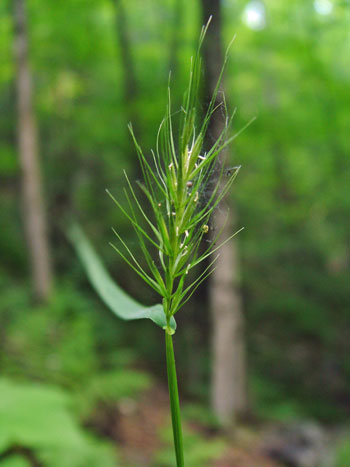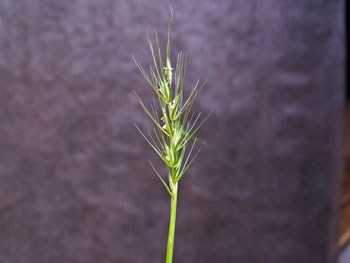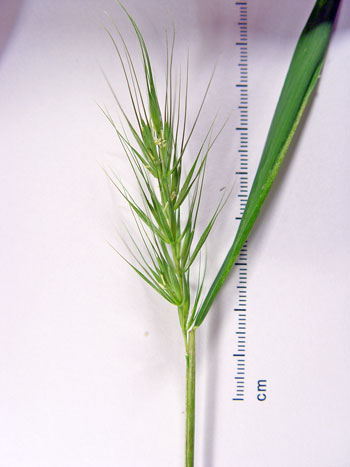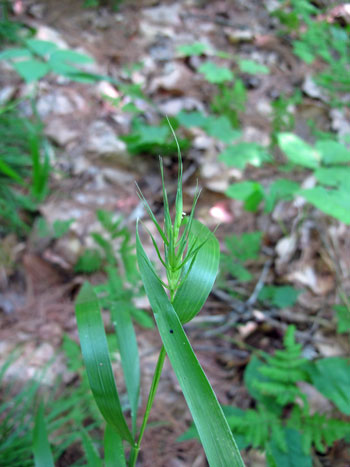DACF Home → Bureaus & Programs → Maine Natural Areas Program → Communities, Plants, and Animals → Rare Plants → Elymus macgregorii

Elymus macgregorii R. Brook & J.J.N. Campbell
MacGregor's Rye
- State Rank: S2
- Global Rank: G5
- State Status: Special Concern
Habitat: Rich, mesic, circumneutral soils of hardwood forests and floodplains.
Range: Eastern U.S.
Aids to Identification: Wild ryes are recognized by their coarse spike inflorescences, alternating clusters of spikelets along the rachis, and long awns. MacGregor's wild rye can easily be confused with the more common Virginia wild rye (E. virginicus), thus easily overlooked. Both have erect spikelets and straight awns and may occur in similar habitats. MacGregor's wild rye has longer awns; 10-25 mm long compared to 0-10 mm in Virginia wild rye. MacGregor's wild rye also has fewer nodes (9-18) per spike and longer internodes (4-7 mm) than Virginia wild rye (ie. MacGregor's wild rye appears less compact than Virginia wild rye). MacGregor's wild rye also has glaucous to pubescent leaf blades whereas Virginia wild rye has glabrous leaf sheaths.

Ecological characteristics: Little is known ecologically about this plant in Maine.
Phenology: Flowering and fruiting late May through mid June.
Family: Poaceae
Synonyms: Recently recognized as a separate species from the Elymus virginicus L. complex.
Known Distribution in Maine: This rare plant has been documented from a total of 10 towns in the following counties: Kennebec, Oxford, Penobscot, Somerset, Waldo.
Reason(s) for rarity: Possibly confused with Elymus viginicus and overlooked.

